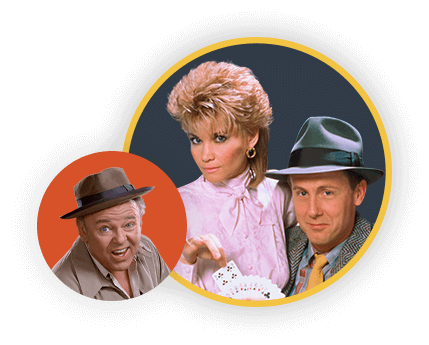Which decade had the best Halloween candy?

Before we get started, just a friendly reminder to regularly visit your dentist.
Now that's out of the way, let's go trick-or-treating through time! The American practice of trick-or-treating really didn't get rolling until after World War II. There are certainly delectable candies from the 1930s and 1940s, but we wanted to stick to the era that most of us remember, when going door to door was a youth ritual. Over half a century, candy makers continued to innovate. New chocolate bars, fizzy wonders, wearable treats and miniature sizes rolled out of the candy fanctories. They had fun names like Runts, Razzles, Nerds, Zotz and Pixy Stix.
This is certainly not everything, and some divisive standbys — like candy corn and Bit-O-Honey — we left out. These are the highlights of what gained popularity and what first hit the market in the 1950s, '60s, '70s and '80s.
What was your favorite? What did we overlook? Which decade was the best ever for trick-or-treating?
The 1950s

Aside from Junior Mints and perhaps Atomic Fire Balls, most candy of the Eisenhower era has fallen out of favor. Candy cigarettes, however, faded away under pressure. Though you can still find most of them stocked in retro shops. This early on, many candies were regional productions. What you got in California was likely quite different from a bag of goodies in Boston. What stands out is the more sophisticated palate of children. Sugar was less prominent and balanced with bitter flavors like licorice in Sen Sen and Black Taffy. Satellite Wafers, or Flying Saucers, tapped into the sci-fi mania of the era, as the discs spilled little candy beads. And of course, there were the ubiquitous Necco Wafers.
The 1960s

Banana flavoring was all the rage. Necco sold its Banana Splits, then there were banana Now & Laters and banana Slap Stix. Candy lipstick, such as Flipsticks, and candy jewelry was great for make-believe. The sugar content took a big leap with straight shots like Pixy Stix and the candy drink Fizzies — a sort of Pop Rocks meets Alka Seltzer wonder, younger folk. Razzles hit the market in 1966, with the nifty jingle, "First it's a candy, then it's a gum!" Mike and Ike (and the similar, cinnamon Hot Tamales) were a welcome prize.
The 1970s

Chemistry came into play in the 1970s. Textures, flavors and formats got quite creative. "Lik-A-Stix" were added to "Lik-M-Aid" to create the almighty Fun Dip. Charleston Chew, a molar-working bar that dated back decades, introduced strawberry and chocolate flavors. Laffy Taffy told silly jokes. New sour treats (or tricks, depending on your tongue) like ZotZ grew popular. Charms Blow Pops put gum inside a sucker. But the don of all 1970s candies has to be Pop Rocks, which hit in the middle of the decade, and became urban legend thanks to its volatile relationship with soda.
The 1980s

Willy Wonka became a major player with its brilliants marketing and clever ideas. Nerds were often the first to go from a kid's plastic pumpkin. Tiny fruit candies were all the rages, as Runts hit the market and Skittles were introduced to the U.S. market. Another import that became a rage were Gummy Bears, no doubt aided by Disney's Gummi Bears cartoon. Though it was rarely given out on Halloween, Big League Chew, the invention of a minor leaguer on the Portland Mavericks, was holy grail for sugar seekers. Perhaps too late to compliment candy necklaces and watches, Topps invented the pacifier-like Ring Pop in 1979. Airheads, introduced late in the decade, would become a favorite of '90s kids.




